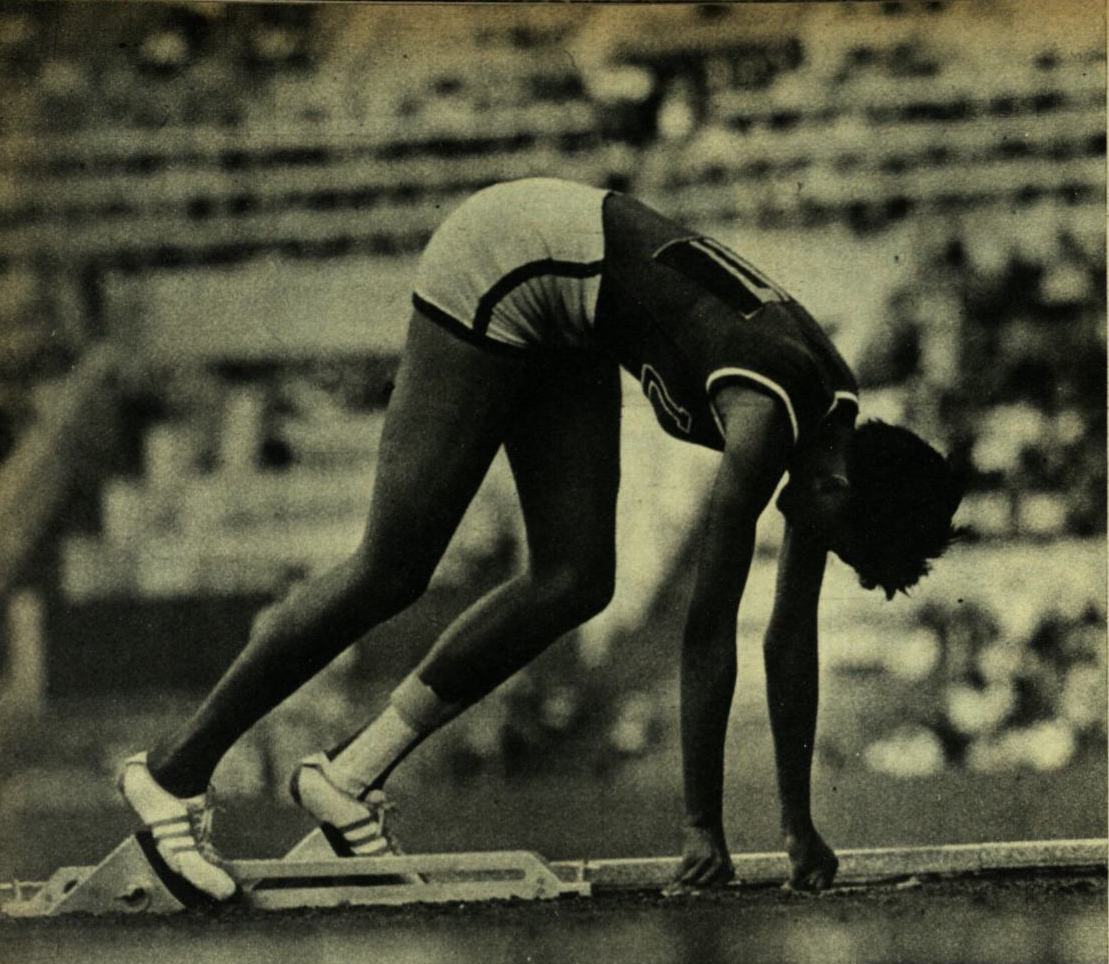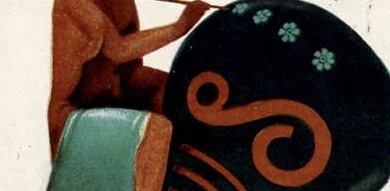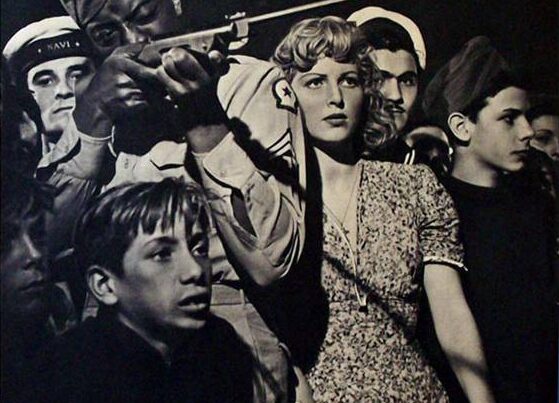On February 20th, 2021, the Italian long-jumper Larissa Iapichino set a new under-20 long jump indoor world record at the national championships in Ancona, equalizing the Italian long jump record achieved by her mother, Fiona May, in 1998. The following day, together with several displays of enthusiasm, an article published by Corriere della Sera in 2018[1] has been called to the public attention because of the author stating that Iapichino was the expression of “Fiona’s wild beauty” “tamed by her father’s Caucasian chromosomes”. The outraged comments on the social media[2], aimed to underline the racial legacies conveyed by this phrase, led the Corriere della Sera’s staff to adjust the text to a milder version, where Fiona’s beauty, now defined as Caribbean, is just “mixed with the father’s European chromosomes”: a superficial revision incapable of truly modifying the structure of the article, still containing many traces of the most popular stereotypes attributed to the black female athletes. Despite the revision, in fact, Iapichino turns out to be a charming “gazelle” with “ebony skin”.
The case of Larissa Iapichino is a clear expression of how a racist colonial heritage still operates today. It also provides evidence of how colonial cultural representations survived through the post-war period, being transmitted and thriving in an almost uninterrupted chain of cases like this one. More specifically, this case appears to be particularly significant since it evokes the encounter between the idea of a hypersexualized black woman and the attribution of animalistic features to the black body in general. That merging of the “black Venus” and black athlete’s stereotypes is at the core of my current research project which aims at studying how issues of race and colonial heritage were represented in popular culture, in particular through the lens of Epoca (1950-1997), one of the major Italian newsmagazines of the post-war period. I’m focusing on how Africa and people of African descent were portrayed, in order to analyze the hetero-referred side of the Italian identity building process as well[3].
Sixty years ago, Epoca published an article entitled “The ‘black Venus’ is the fastest of the world”[4]: the topic was the new 100m world record set in Stuttgart by Wilma Rudolph (later also remembered in Italian popular culture as the “black gazelle”) on July 19th, 1961. According to the magazine, Rudolph was a “simpatica ‘negretta’ americana” [nice American “little negro” girl] who finally gained the world record she was denied the year before, during 1960 Olympic Games, due to excessive tailwind.
At the beginning of the Sixties, Italy had just ended its postcolonial experience in Somalia (the Trust Territory of Somaliland under Italian Administration, 1950-1960) and, although it did not experience the significant migrations other former colonial powers did, “the country was not white, homogeneous and ‘blemish-free’ as the national self-narrative had long claimed”[5]. The corollary of this misleading narrative was the belief that Italians did not have the chance to dwell upon “race”, since there were no black people in their country[6]. People from the former colonies – as well as groups of African Americans from the U.S. settled in Italy after WWII – were not many and mostly concentrated in specific geographical areas, yet that assumption is quite inaccurate: first of all, an examination of Epoca shows indeed that “meticcio” Italians, as well as black people in general, were absolutely present both in the Italian society and in the Italian popular culture. Secondly, it could be argued that Italians were fully aware of it.
Going back to the Stuttgart race, it is remarkable how Epoca’s editorial staff did not give specific information about the event, nor mention any of this athlete’s skills. Apart from the fact that she had already participated at the Olympic Games in 1956 and in 1960, and some additional information around her biography (mostly about her large family and her childhood marked by polio), the author decided to highlight that, “because of her attractiveness, she is defined by sportsmen as the ‘black Venus’”. What Epoca is recalling here, just like in the title of the article, is the old and powerful stereotype, deeply rooted in the colonial past, of a hypersexualized woman, “the epitome of the collective unconscious fantasy and equally of the primordial fear of the Other”[7]. Like in the Iapichino case, although the reference to the “black Venus” does not appear in that context explicitly, this image overlaps and merges with another widespread stereotype: the “natural prowess” of the black athlete[8].
As previously mentioned, Wilma Rudolph participated in the 1960 Olympic Games and, in that year, she became the first American woman to win three gold medals in a single Olympic Games. The competition took place in Rome and Epoca noted her successes. Looking at the article published on that occasion[9], once again the editorial staff points to her physical appearance: they write that Wilma Rudolph combines “a remarkable feminine charm” with “an exceptional athletic ability”, and furthermore they state that somebody, talking about her, used to remember Josephine Baker, the pre-eminently “black Venus”. The entanglement between sexual dimension and natural inclination to physical activities results reinforced when the author writes – in order to emphasize her unprecedented achievements – that “nobody has ever seen a woman running so lightly”: “without any effort, without any orgasm”. Thus, rapidly escalating, the focus is moved from the generic stereotype of the “black Venus”, although definitely rooted in the sexual sphere, to an explicit and rough reference to the apex of the sexual act.
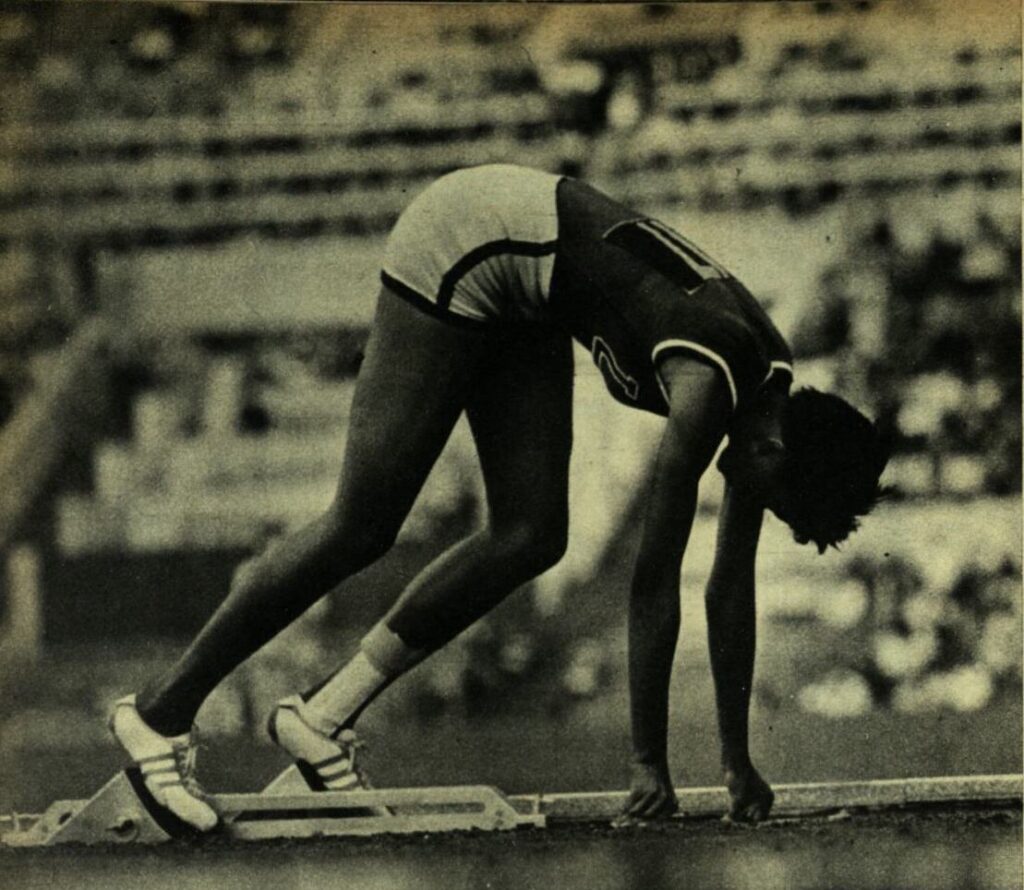
Looking also at the pictures chosen to illustrate the article, it can be noticed how, beside two images of Rudolph portrayed out of the race context (hugging the American athlete Earlene Brown and carrying some presents received by her admirers), the predominant picture portrays her in the crouched position of the sprinter, staring at the ground (fig. 1). In this case Epoca selected a figure unbalanced and bent down, instead of showing the athlete in the act of running. The idea conveyed is that of an explosive performance, where sporting and sexual prowess are connected and where the structure of the image can potentially evoke a sexual and even animalistic position[10]. Looking at the pictures from the article published in 1961 – together with an image of a running Rudolph, this time – the second picture chosen to celebrate her world record portrays the athlete with an arm pointed on her hip and a clearly protruding tongue (fig. 2). Although this photo does not evoke evident sexual references, it is significant that the editorial staff decided to pick a picture that emphasize her feminine figure, in a way that is rather distant from the celebrative iconography of the sporting body.
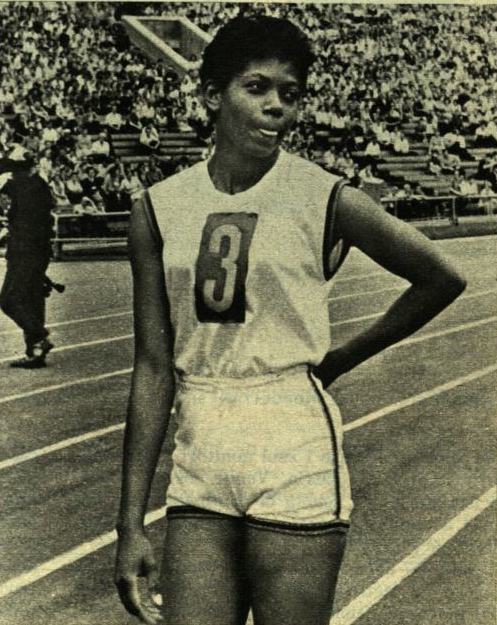
In the context of an athletic competition, where the only element qualifying the winner appears to be her identification with the “black Venus” stereotype, colonial heritage comes to light in an even more disruptive way when Abebe Bikila is mentioned. His success is in fact celebrated by Epoca in the very same article where Rudolph is compared to Josephine Baker: the Ethiopian runner was the winner of the Olympic marathon in Rome 1960 and the editorial staff notes that everybody acclaimed him “recalling in the picturesque jargon the colonial memories and calling him Ras Tafari, affectionately”. Furthermore, the athlete who won the silver medal in the same competition was Rhadi Ben Abdesselam, a Moroccan long-distance runner. Referring to the two African winners Epoca quotes that somebody stated: “Noah’s Ark arrived”. This phrase sheds light on one last aspect, already pointed out in the Iapichino case: the central role played by media in biologizing black performance using animalistic similarities[11], in this occasion strongly linked to the idea of an a-historical and mythological living condition.
In conclusion, going back to the article appeared on Corriere della Sera it is relevant to underline that the author dedicates the last paragraph to considerations concerning racism in Italy, quoting Fiona May who stated “Italy is not racist. I have lived here for 20 years, thus I can say that”. On the contrary, the colonial legacies evoked by the very same article show how colonial (and racist) cultural representations still resound in our contemporary society. Considering an event occurred sixty years ago and representative of a long-term trend – such as the Wilma Rudolph case – helps us to fill the gap between colonial past and postcolonial present and to shed light on the paths followed by colonial and racist stereotypes in the long post-war era. It also allows us to reflect upon the relationship between a colonial past made present and active by the ongoing presence of people considered colored and an enduring narrative of an alleged homogenous body of the nation[12].
[1] Gaia Piccardi, “Fiona e Larissa May: i segreti del salto (e della vita) di madre in figlia,” Corriere della Sera, August 9, 2018 (modified on February 21, 2021), https://www.corriere.it/liberitutti/18_agosto_06/fiona-larissa-may-segreti-salto-vita-madre-figlia-78abb2ba-998b-11e8-93a8-0c8df24d38b5.shtml
[2] The first comments appeared probably on Twitter, when Oiza Q. Obasuyi posted a screenshot of the Corriere della Sera article highlighting the phrase: “Larissa, in addition to Fiona’s wild beauty (who was born to Jamaican parents in UK) tamed by her father’s Caucasian chromosomes […]”. On February 22nd, Obasuyi posted about deleting the previous tweet, since she had the chance to talk to the author who proceeded to modify the article (although Obasuyi considered the adjustment superficial and not complete).
[3] Cf. Gaia Giuliani, Cristina Lombardi-Diop, Bianco e nero: Storia dell’identità razziale degli italiani (Florence: Le Monnier, 2013).
[4] “La ‘venere nera’ è la più veloce del mondo,” Epoca, no. 565, July 30, 1961, 12.
[5] Valeria Deplano, “Within and Outside the Nation: Former Colonial Subjects in Post-war Italy,” Modern Italy 23, no. 4 (2018): 397.
[6] Cf. Cecilia Brioni, Simone Brioni, “Transnational ‘Italian’ Stardom: Lara Saint Paul and the Performativity of Race,” Italian Studies 73 (2018): 351-364.
[7] Sandra Ponzanesi, “Beyond the Black Venus: Colonial Sexual Politics and Contemporary Visual Practices,” in Italian Colonialism. Legacies and Memories, ed. Jacqueline Andall and Derek Duncan (Oxford: Peter Lang, 2005), 176.
[8] Cf. Kevin Hylton, “Race” and Sport. Critical Race Theory (London and New York: Routledge, 2009).
[9] Ezio Colombo, “È finita la meravigliosa festa delle Olimpiadi,” Epoca, no. 520, September 18, 1960, 60-65. Pictures by Mario De Biasi, Tazio Secchiaroli, Sergio Del Grande, Angelo Cozzi.
[10] Cf. Ben Carrington, “‘Race’, representation and the sporting body,” in CUCR’S Occasional Paper Series (University of Brighton: Brighton, 2002).
[11] Cf. Ben Carrington, “‘Race’, representation and the sporting body,” in CUCR’S Occasional Paper Series (University of Brighton: Brighton, 2002).
[12] To explore the connections between Italian black female athletes and our current society: Sandra Agyei Kyeremeh, “Sportive nere in maglia azzurra. Un approccio intersezionale allo sport italiano,” Africa e Mediterraneo 84 (2016): 46-50.


